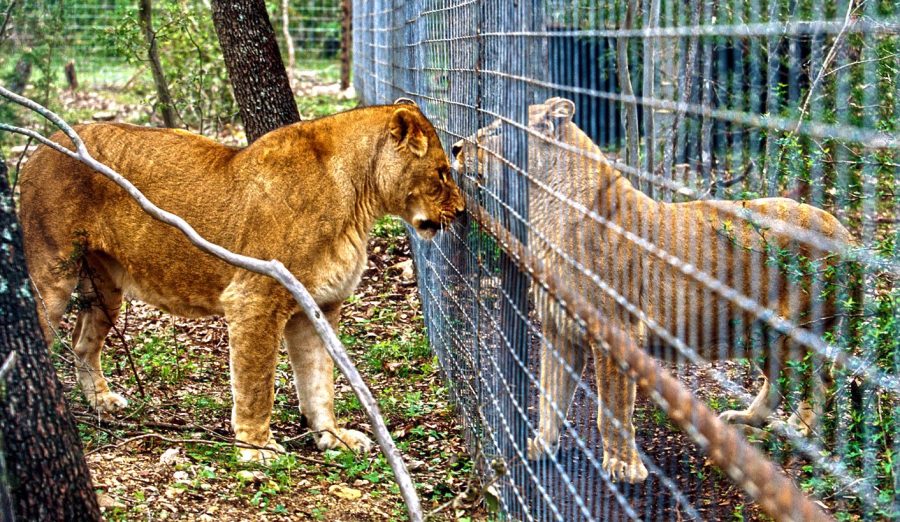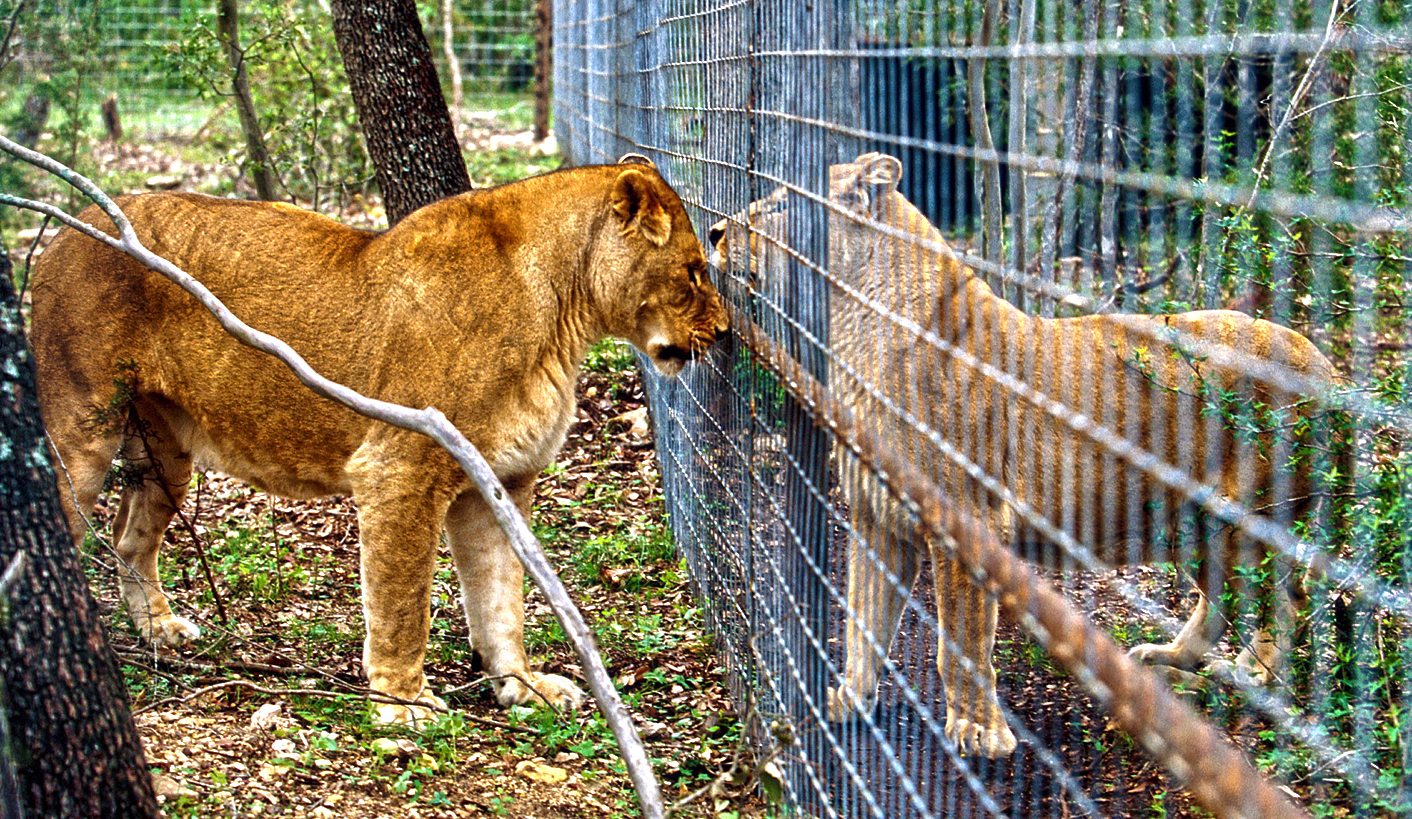
SA Government Ignored its Own Team to Redefine 32 Wild Species as Farm Animals
In listing 32 wild animal species as farm animals under the Animal Improvement Act in 2019, the Department of Agriculture went against the recommendations of the government’s own scientific authority. The scientific report on wildlife breeding was called for by the former Minister of Environmental Affairs (DEFF) and authored by 14 of the country’s top wildlife scientists. […]

In listing 32 wild animal species as farm animals under the Animal Improvement Act in 2019, the Department of Agriculture went against the recommendations of the government’s own scientific authority.

The scientific report on wildlife breeding was called for by the former Minister of Environmental Affairs (DEFF) and authored by 14 of the country’s top wildlife scientists.
It warned that the listing of indigenous game animals under the Animal Improvement Act (AIA) would “entrench and exacerbate many of the risks highlighted in this report… It is strongly recommended that no further indigenous species are listed”.
This is precisely what happened.
The Department of Agriculture – which virtually sneaked the new listing on to the statute books as a two-page amendment to an addendum – either failed to read or simply ignored the extensive 170-page peer-reviewed DEFF report.
Or was it all simply bad timing?
There was no public consultation. The Department of Agriculture admitted in Parliament that no scientific study had been done in redefining the animals incorporated under the AIA.
The DEFF report is likely to be the centrepiece of a court challenge by two civil society organisations.
Review processes have been independently filed by the Endangered Wildlife Trust and the SA Hunters and Game Conservation Association to have the amendment rescinded. They will, among other things, seek to establish why breeder profits were favoured over sound science, why the process was not followed and how this move could impact on conservation principles
SA Hunters say intensive breeding can have conservation value where there are critically low populations.
But it has noted “growing concerns and evidence from various sectors regarding the potential cumulative impacts of intensive and selective breeding of game for the commercial benefit by game breeders and how this may impact on the status of game species”.
The DEFF report notes similar concerns. It emphasises that, far from being a conservation measure, captive breeding is a potential danger to wild populations through “leakage” to free-roaming populations.
It added that “intensive management and selective breeding of game poses a number of significant risks to biodiversity [and] the biodiversity economy… and may compromise the current and future contribution of the wildlife industry to biodiversity conservation”.
Other dangers include a venison health risk from over-medication of intensely bred wild animals, parasite infections on farms being transferred to wild animals, reputational damage to South Africa from “canned” hunting of captive-bred animals as well as aberrant traits from increasing domestication, intensive breeding, hybridisation, genetic manipulation and selective inbreeding.
The report concludes that “the practice of intensive and selective breeding based on the findings of this assessment may not meet the criteria for sustainability”.
There’s a fundamental truth underlying the report: wild animals know how to look after themselves – they’ve been perfecting it for millions of years. When their environment is controlled by humans, however, there are problems. In general, we act in our best interests, not theirs.
For this reason, according to the Scientific Report, it’s essential to use a precautionary principle in our relationship to wild animals, because some actions cannot easily be undone and could precipitate a disastrous cascade.
The report also cautions against creating market hype to push prices above the intrinsic value of the asset.
This has led to market crashes in canned lion hunting and the breeding of colour variants in SA, the ostrich market in the United States, the hybrid tulip market in the Netherlands and the emu market “bubble” in Canada. In each case, millions of dollars were lost.
“Speculation linked to investment interest in a market can lead to an escalation of prices as new investors buy into this market,” it notes.
“This can lead to inflated prices and oversupply, especially in cases of poorly developed consumer markets, as is the case for colour variants. The common outcome of such is massive profit for the originators and early investors and significant financial loss.”
According to the report, potential impacts related to the intentional breeding for selective traits such as colour variation or increased horn or body size include the expression of “warped” genes, the loss of genetic diversity, outbreeding depression, physiological stress and domestication.
If these animals are released into the wild – and the report says it would be very difficult to prevent this over time – weakened genetic strains could “infect” wild herds and could lead to gradual extinction.
“A loss of genetic diversity is highly likely to result in decreased fitness and in the long term reduce the evolutionary potential of populations to adapt to environmental change.”
Another problem is the inappropriate use of products to reduce parasites which leads to them developing resistance and then spreading to other farms and wild animals. It could also lead to the entire failure of the veterinary product.
There is also the problem of residual chemicals in venison that’s marketed locally and internationally.
Continuous management will also entrench the domestication process, the report says.
“Domestication leads to the habituation of animals to humans, but in the long term to the selection of more timid animals that adapt better to a captive environment.
“Erosion of the social structure and behaviour of intensively bred animals over time results in a loss of their natural ability to adapt to wild conditions.”
It also causes physical and behavioural changes, including decreased flight responses, increased sociality, earlier reproduction and modification of endocrine and metabolic systems.
“The probability that the process of domestication will take place within intensive breeding facilities is virtually certain and the impacts or effects of domestication are likely to be permanent with respect to the individuals within intensive breeding facilities.”
Deliberate or accidental introductions of captive populations which have undergone genetic changes, says the report, could compromise the evolutionary trajectory and adaptive potential of wild populations.
There are also welfare considerations about individual animals. If released into the wild, manipulated game animals are likely to suffer high levels of mortality through predator naivety.
Another problem, says the report, is the “sterilisation” of environments to prevent predation by natural predators.
The misuse of pesticides and hazardous substances to control damage-causing animals including predators, birds of prey, primates and warthogs is common practice within certain sectors of the game-breeding industry.
Because no environmental impact assessment needs to be done when erecting small game-breeding camps, they can be set up in sensitive areas on the borders of protected areas. This can negatively impact the ecosystems of protected areas.
“These impacts,” says the report, “include habitat fragmentation, animals killed in fences and reduced tolerance towards free-ranging threatened predators.”
The report notes that the killing of predators and other conflict species may result in a reduction in their population numbers or elimination from certain areas with limited opportunity for recolonisation.
This could lead to a change in the conservation status of species such as leopards, caracal and jackals and pose an extinction risk.
“The disruption of natural predation interactions, through the exclusion of apex predators from the agricultural landscape may result in an increase of smaller to medium-sized predators. This, in turn, may lead to a disproportionate impact upon smaller prey species, also potentially increasing human-wildlife conflict.”
The report flags another concern. Some high-value species do not breed well in captivity, so the temptation will be to source these from the wild. The removal of rare wild species with small population sizes can lead to population declines resulting in a lower overall conservation status.
“A number of high-value game species are presently being captured from the wild and brought into intensive-breeding facilities. For species with small population sizes in the wild or rare species, capture “will reduce wild population sizes and can increase their extinction risk”.
The Professional Hunters Association of South Africa (Phasa) has also expressed concern over intensive breeding of wildlife and is opposed to the “highly controversial practices such as artificial insemination, cloning, genetic manipulation and any procedure that produces artificial colour variants”.
SA Hunters have pointed out that the game species listed in terms of the AIA do not refer to scientific names. As a result, this creates confusion as several of the species listed have more than one subspecies. Some of these do not occur naturally in South Africa and are listed as alien invasive species.
Concern has also been expressed by the EMS Foundation. In a letter to environment minister Barbara Creecy, it says no public consultation took place in the amendment. Her department, it says, seems to have washed their hands of the process, proclaiming it an agricultural concern.
“The amendments to the AIA entrench the idea that wild animals are merely commodities with no inherent right to live in the ecosystems and social systems in which they belong and in which they play an essential role. They are likely to endanger the genetic health of wild populations. Weak enforcement of laws means that there is a high possibility of genetically manipulated specimens coming into contact with wild populations.
“Environmental authorities within all spheres of government have also consistently denied that they have a mandate to deal with welfare.”
The foundation called on the minister to roll back the amendment and prohibit the intensive breeding for commercial purposes of any wild animals – particularly the indigenous species of wild animals recently listed in the Animal Improvement Act.
Original article: Conservation Action / www.dailymaverick.co.za